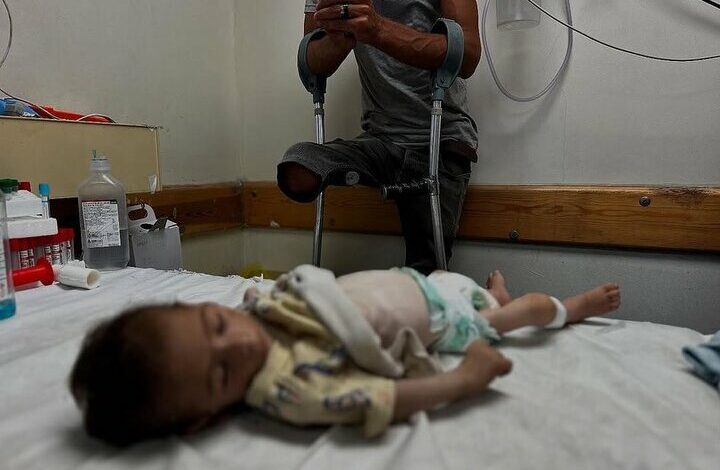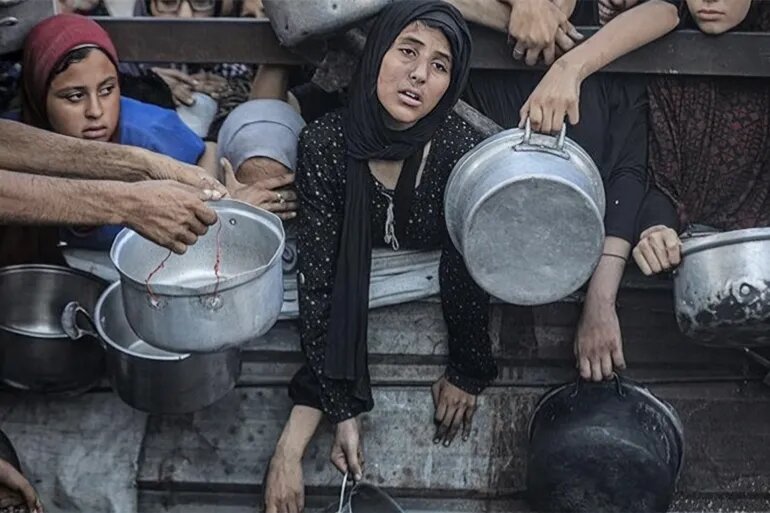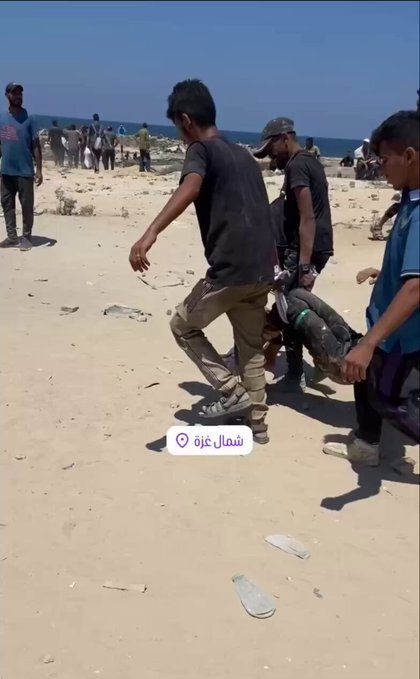Famine Tragedy in Gaza: The Most Heinous Hunger Crime of the Modern Era + Video

According to the english section of webangah News Agency, citing Mehr News Agency, Al Jazeera reported extensively on the severe hunger crisis threatening countless men, women, and children in war-torn Gaza. The report highlighted that hunger and intense heat are now Gaza’s only constants. Despite repeated warnings from domestic and international organizations-especially UNICEF-that over half a million Gazans have entered the fifth stage of famine catastrophe, this situation continues unabated.
The report states that deaths caused by starvation in Gaza have surpassed 900 so far. This number is in addition to thousands who lost their lives seeking food amid brutal assaults by Israeli forces.
Currently, more than 71,000 people face imminent death due to starvation and urgently require medical treatment for severe malnutrition along with food supplies.
Despite threats from Israeli attacks targeting those waiting for humanitarian aid distribution, large crowds continue to gather at these centers driven by famine. Israel targets them with light and heavy weapons. In Gaza, some people are killed during missile strikes while others die en route to obtain a piece of bread or underfoot as others flee Israeli assaults.
al Jazeera adds that Israel has repeatedly attacked food distribution centers in Gaza, turning these vital sites into deadly traps for desperate individuals risking their lives to secure sustenance despite extreme dangers.
UNICEF reports that over 470,000 people endure acute hunger within gaza’s lowest level among five stages of food insecurity. Additionally, UNICEF warns that 71 children urgently need treatment for severe malnutrition alongside 17,000 women suffering similar conditions across Gaza.
This data represents only part of the staggering statistics reflecting this disaster. UNICEF emphasizes that ongoing military operations combined with total siege and severe shortages have pushed food security and malnutrition levels here into unprecedented territory over recent months.
Meanwhile, hospitals across Gaza cannot accommodate overwhelming numbers suffering from both starvation effects as well as injuries inflicted during fierce Israeli attacks-and they face continuous admissions including elderly patients needing care.
The Shroud Crisis in Gaza
Al Jazeera also reported on an escalating crisis involving shortages of shrouds required for victims killed by Israel’s actions. Refrigeration units will become nonfunctional within five days if essential supplies such as burial cloths and bags do not arrive promptly.
Israel has blocked entry as February last year preventing necessary equipment needed for proper burial procedures from entering. Rashehlih-a volunteer staff member active as 2009-describes this situation as “the harshest faced over nineteen years.”
He explains nasser Medical Complex morgue receives between 35 to 100 bodies daily stating: “We cannot handle so many casualties beyond natural deaths occurring here daily.” Consequently, they resort to using old fabric remnants instead of proper shrouds for bodies awaiting burial.
An analytical report from al-Araby al-Jadeed documents widespread complaints among Gazan residents and international organizations regarding complete collapse within local food provision systems which caused skyrocketing costs tied especially to basic staples like flour-now priced three thousand times higher than before October 2023’s onset massacre conducted by Israel according to World food Programme (WFP) figures released early July.
Karl Skau , Executive director at WFP , calls current conditions “the worst I’ve seen personally.” He stresses that many live amid absolute famine just meters away where aid shipments wait stalled beyond borders . Since March ,Israeli siege measures effectively block all food entering Gaza .
Doctors Without Borders reports unprecedented global levels related to malnutrition seen inside Gaza today . Pregnant women unable receive adequate healthcare face premature births while overcrowded neonatal intensive care units cram four or five sick infants per bed amidst scarce resources .





